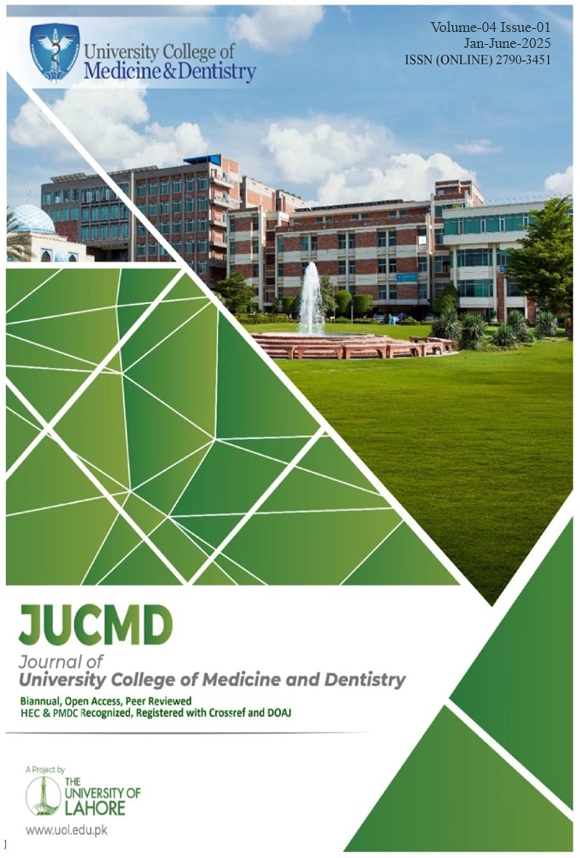Role of Metformin in Reducing the Incidence of Gestational Diabetes Mellitus in Obese Women
DOI:
https://doi.org/10.51846/jucmd.v4i1.3767Keywords:
Gestational Diabetes Mellitus, Pre-eclampsia, Lifestyle changes, Obesity, MetforminAbstract
Objective: To evaluate whether metformin administration reduces the incidence of gestational diabetes mellitus in obese women and to examine its impact on the incidence of preeclampsia, birth weight, and the APGAR scores of newborns.Methods: This experimental study was done at Shalamar Hospital, affiliated with Shalamar Medical & Dental College, Lahore, Pakistan, from May1st 2022 to June 30, 2024. A total of 150 women with a BMI ≥ 30kg/m2, aged 18-40 years, between 11 to 14 weeks pregnant, were included. Those with contraindications to metformin, pre-existing diabetes, or any co-morbid medical disorder were excluded. The participants were divided into two groups with 75 in each: Group A the control group with only standard care. and Group B receiving metformin 250mg three times daily orally in addition to standard care. The oral glucose tolerance test was performed between 24 to 28 weeks and later at 32 weeks. The participants were followed till delivery to record preeclampsia, neonatal birth weight, and APGAR score.
Results: The mean age, gestational age, and BMI were similar between Group A (32.37 years, 11.37 weeks, 32.37 kg/m²) and Group B (31.35 years, 11.27 weeks, 32.3 kg/m²). The incidence of GDM (10% vs. 42%) and preeclampsia (13% vs. 74%) was significantly lower in the metformin group (p = 0.000). However, no significant differences were observed in birth weights or APGAR scores.
Conclusion: Metformin reduces the incidence of GDM and preeclampsia in obese women when started at 11 to 14 weeks of gestation, without affecting birth weight and APGAR score of neonates.
Downloads
Published
How to Cite
Issue
Section
License
Copyright (c) 2024 Shazia Rasul, Maimunah Faruque Malik, Shazia Tazion, Urooj Fatima Adnan

This work is licensed under a Creative Commons Attribution 4.0 International License.
Authors retain copyright and grant the journal right of first publication with the work simultaneously licensed under a Creative Commons Attribution 4.0 International License that allows others to share the work with an acknowledgment of the work's authorship and initial publication in this journal.
Authors are able to enter into separate, additional contractual arrangements for the non-exclusive distribution of the journal's published version of the work (e.g., post it to an institutional repository, in a journal or publish it in a book), with an acknowledgment of its initial publication in this journal.
Authors are permitted and encouraged to post their work online (e.g., in institutional repositories or on their website) prior to and during the submission process.







